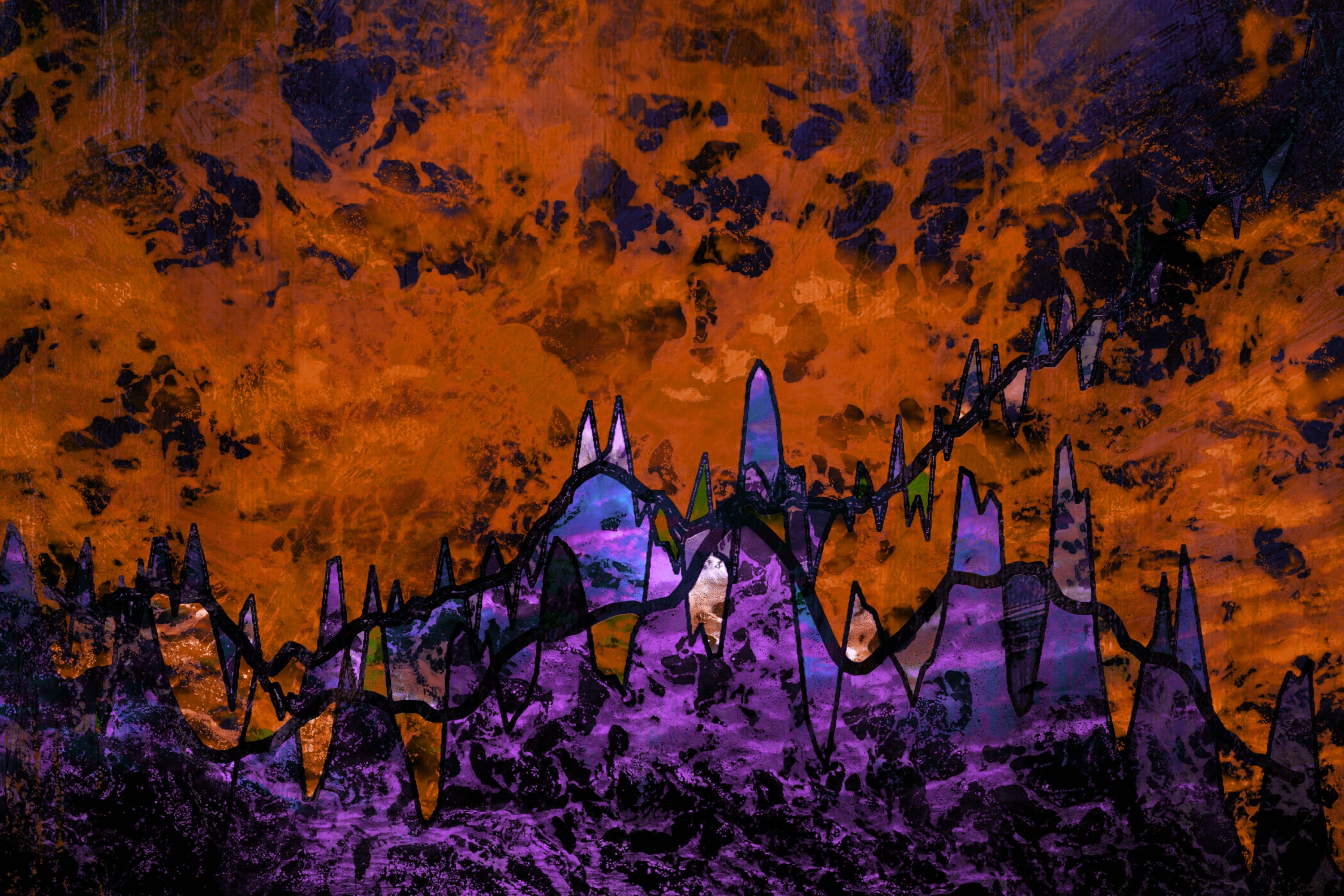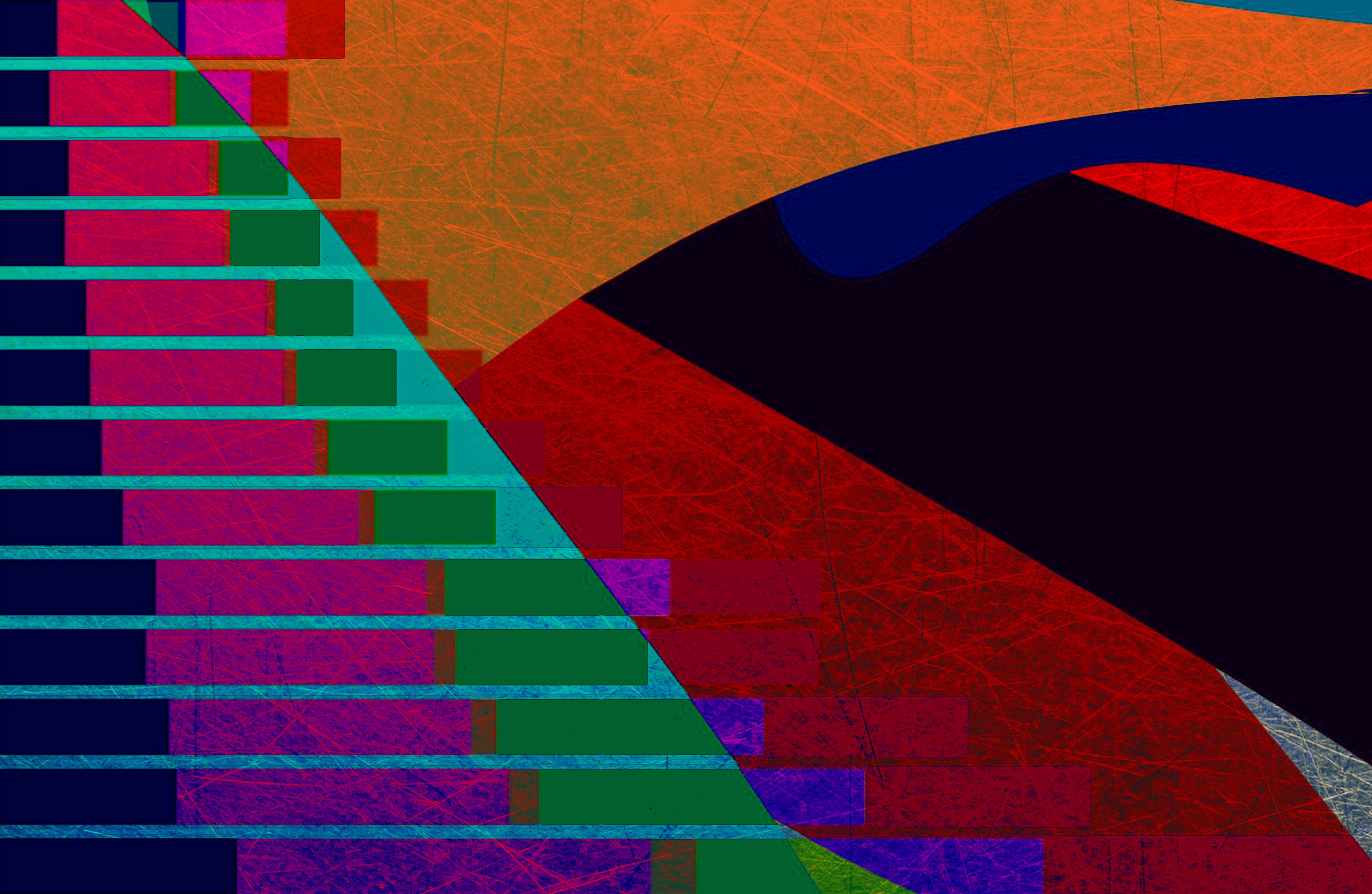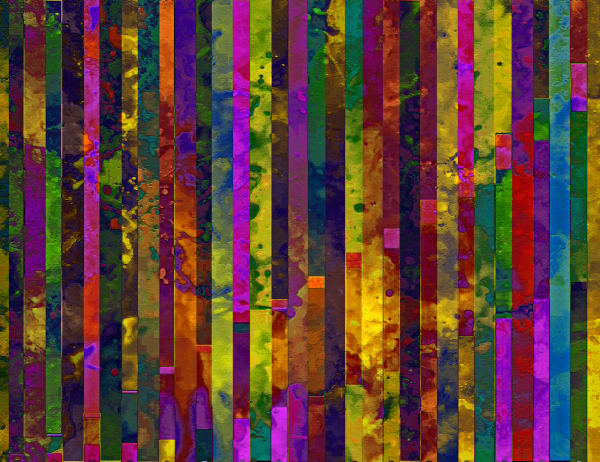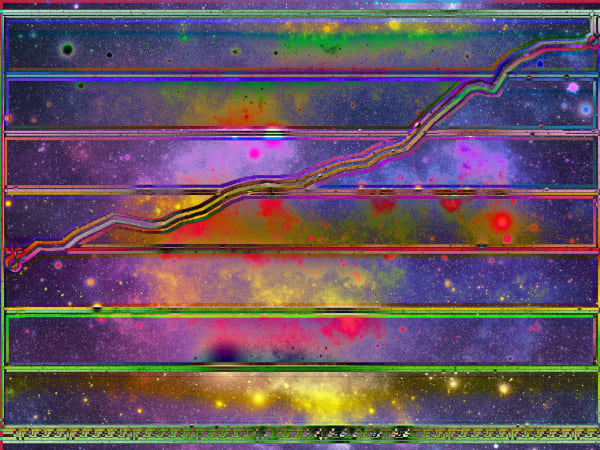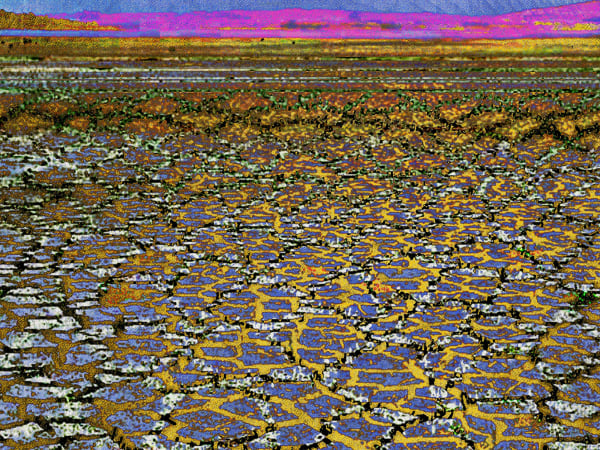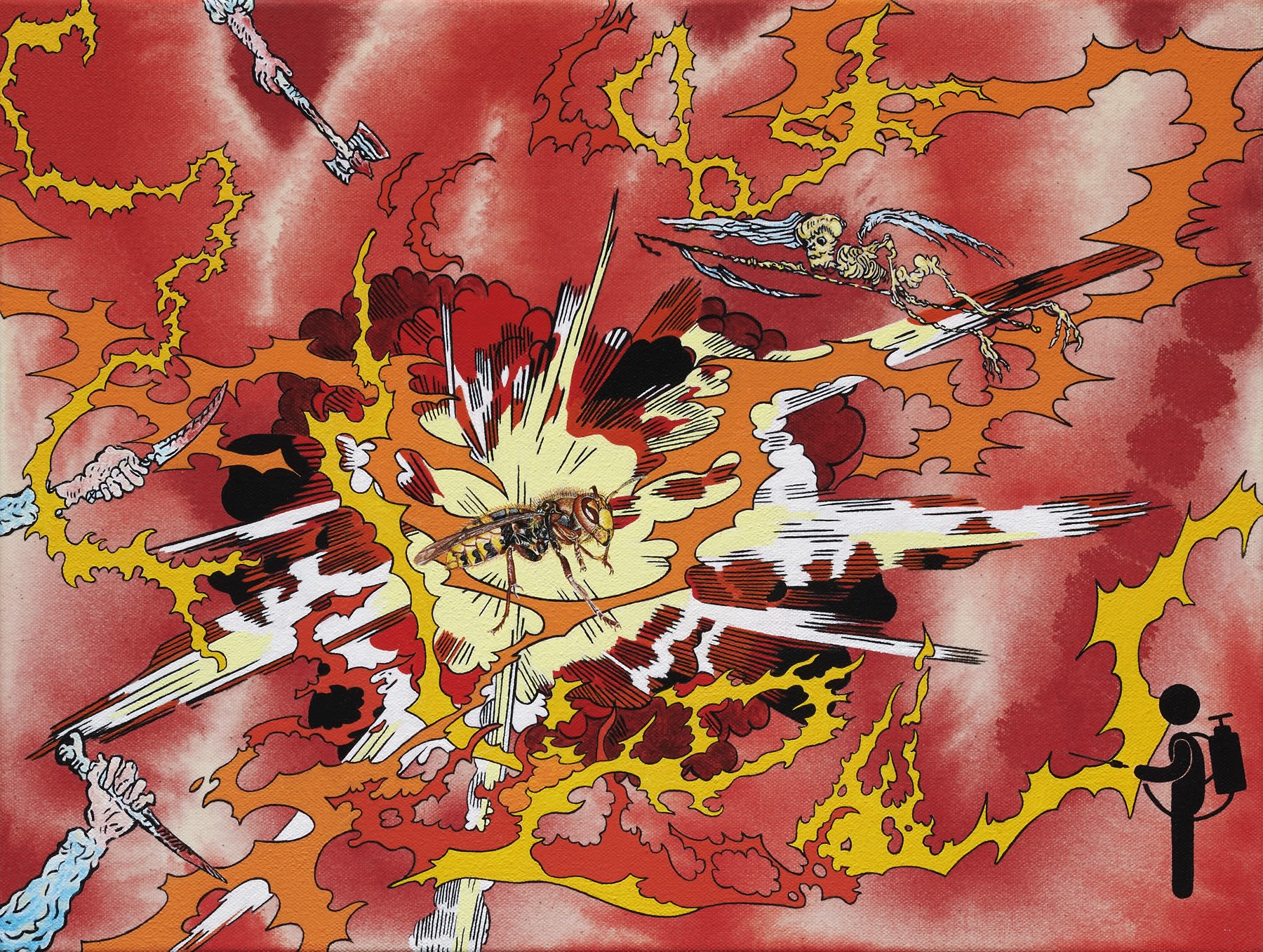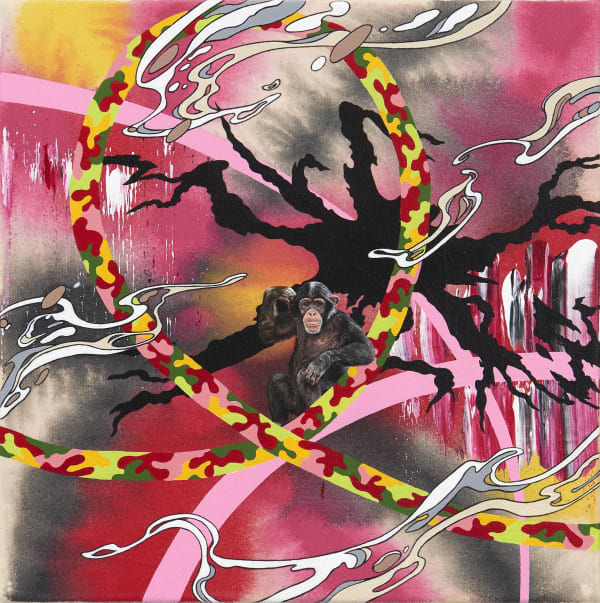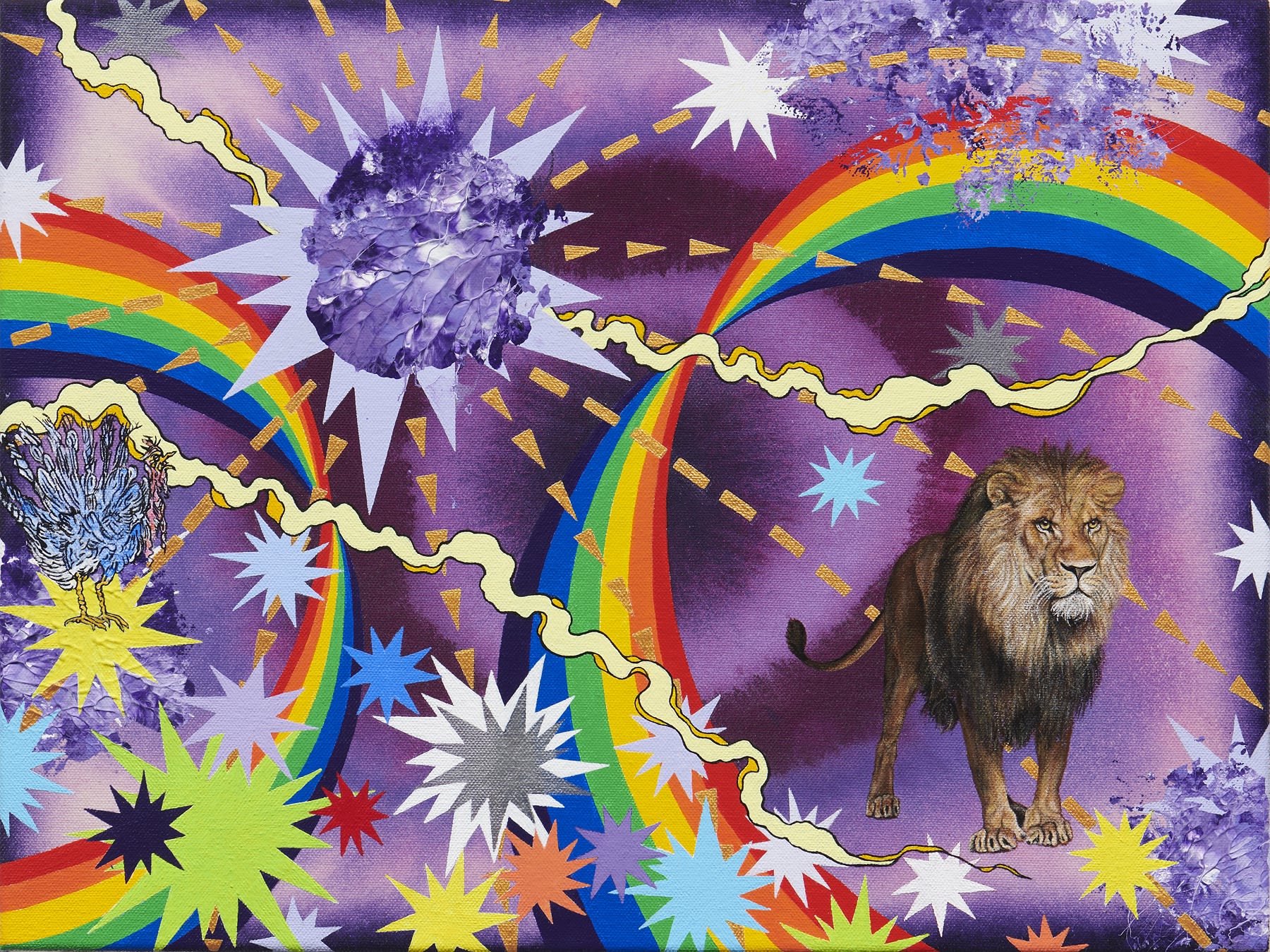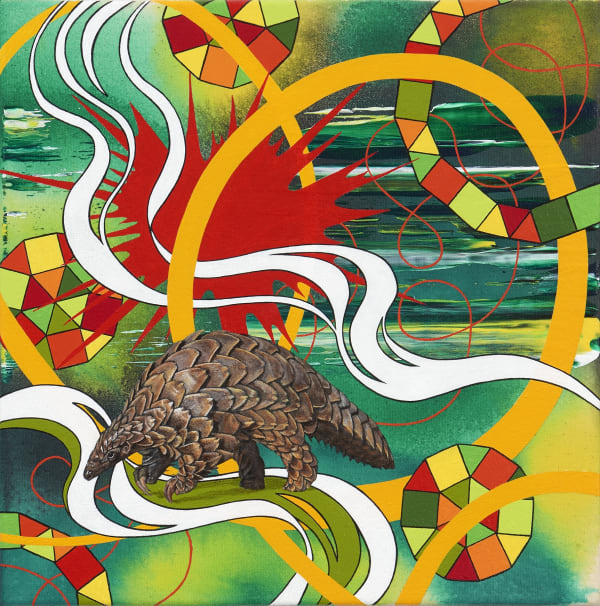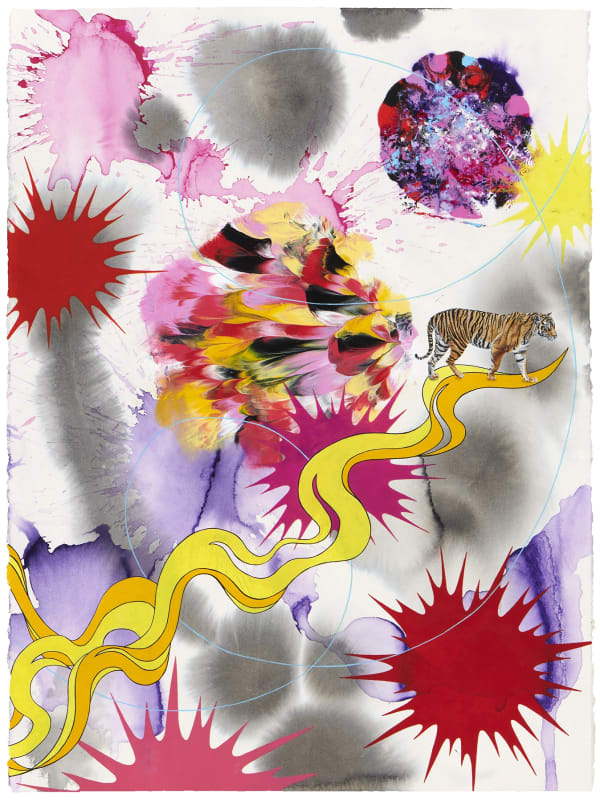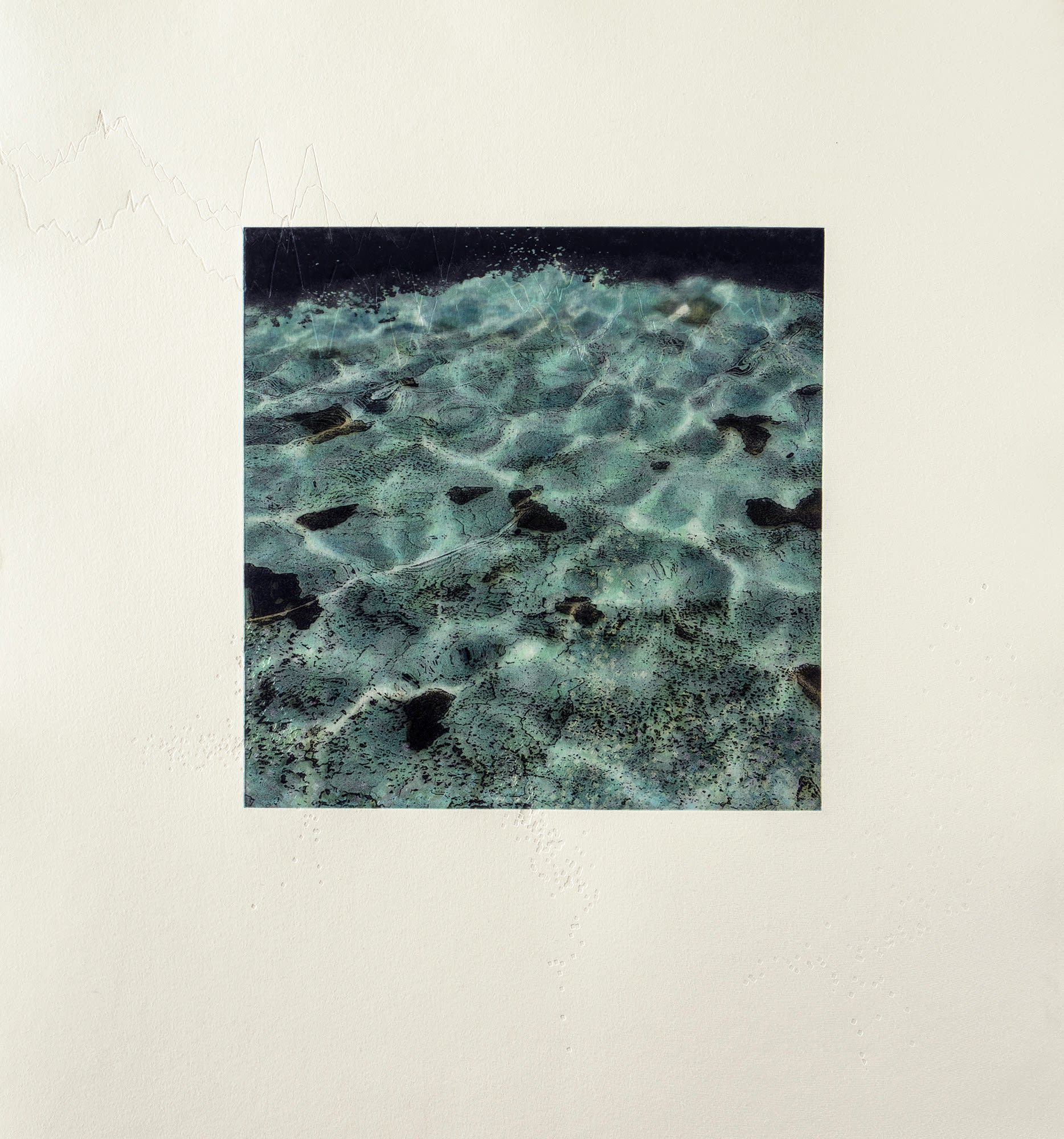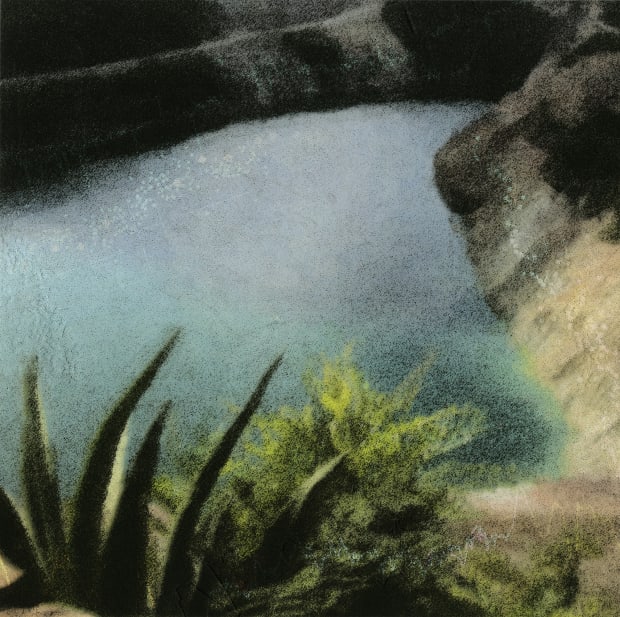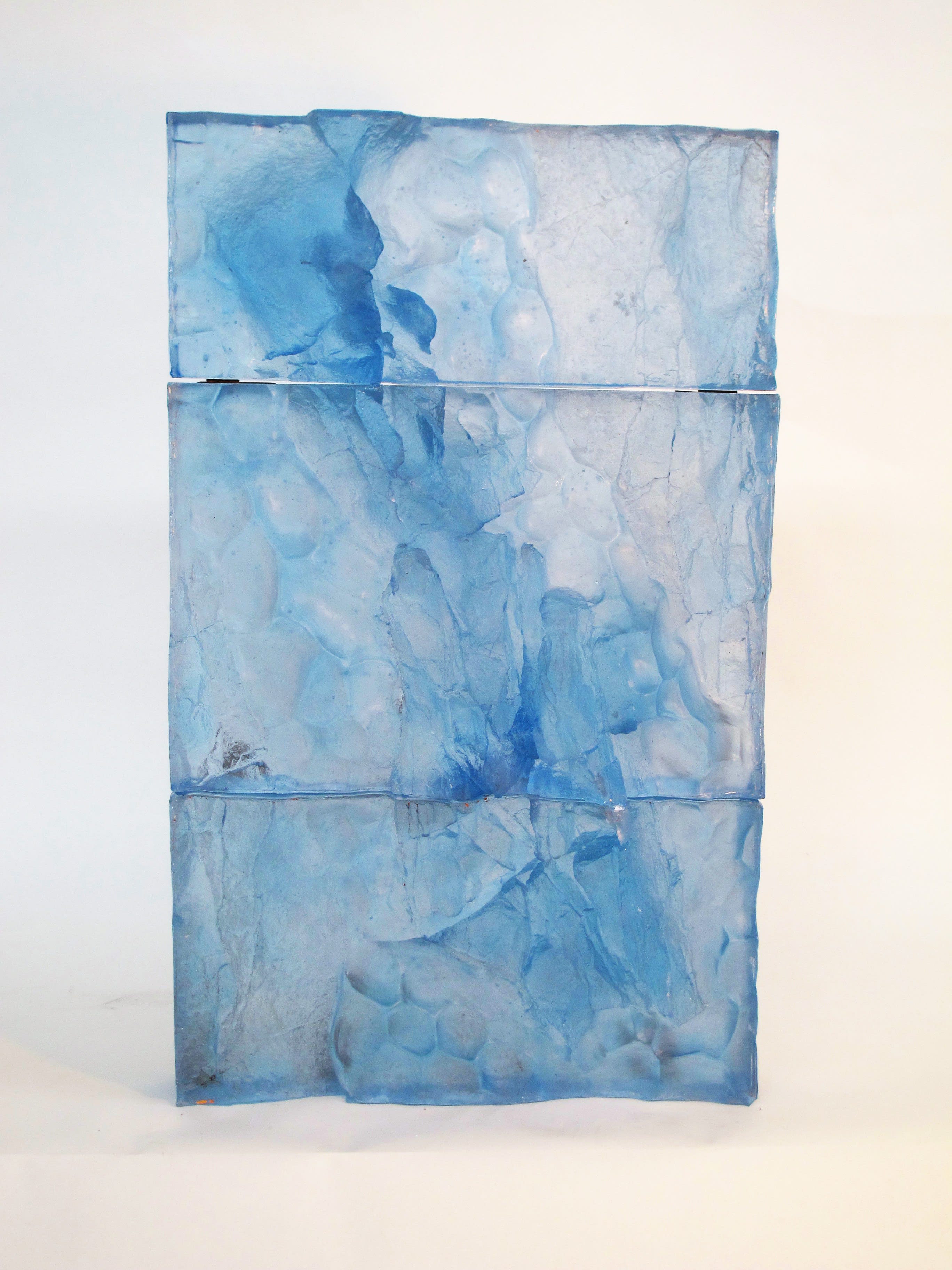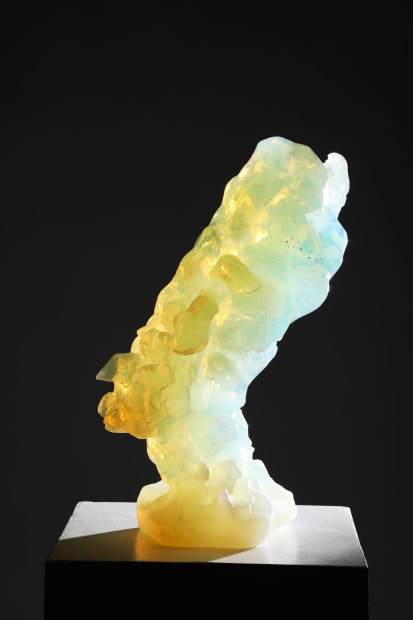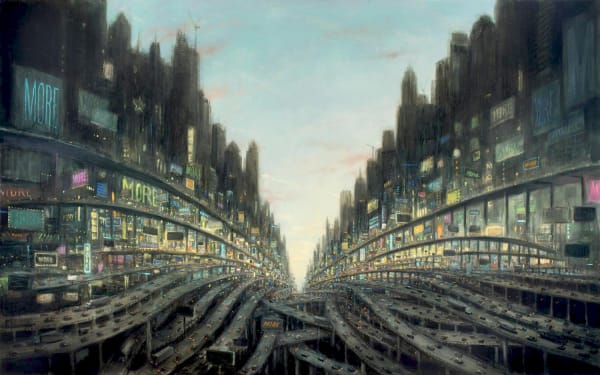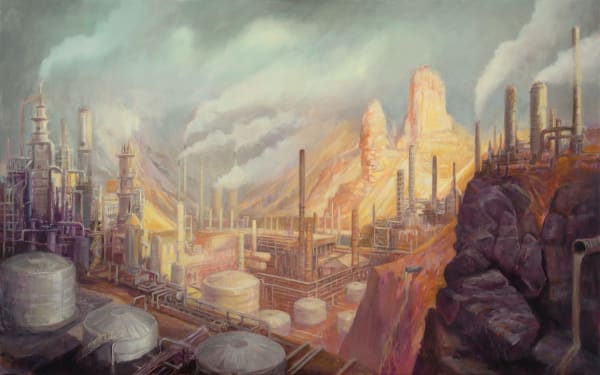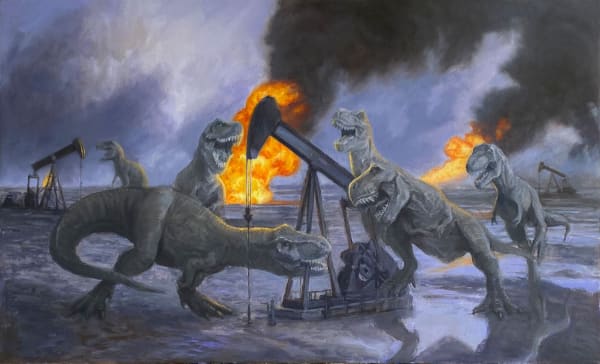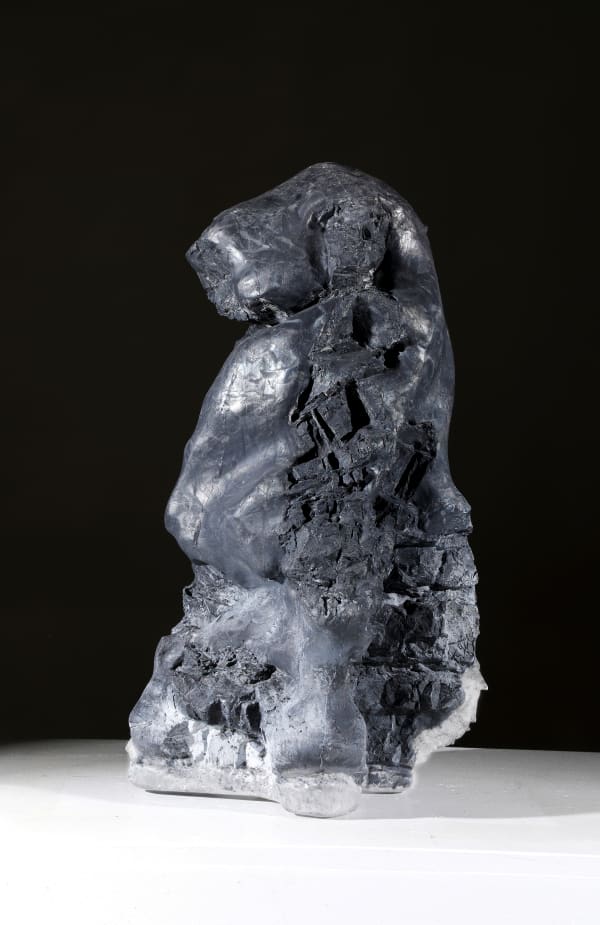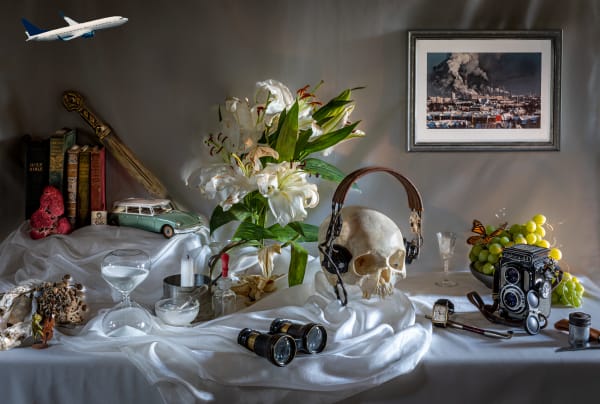-

-
-
Ruth’s Table is pleased to present Climate Change: The Ticking Time Bomb, a virtual exhibition that aims to harness the emotive power of art to communicate an urgent story of climate crisis and inspire each of us to consider how we can all engage on the issue to secure the wellbeing of our planet.
This exhibition opens at a very critical time with climate crisis grabbing daily headlines and a highly anticipated publication of United Nations' report Climate Change 2021
Climate crisis has become the defining issue of our time punctuated by massive droughts, wildfires, flooding, and extreme heat. The scientific evidence is clear and compelling. The year 2020 was the hottest year on record and the last seven years have been the warmest since record-keeping begun in 1800. Earth's atmosphere and oceans are warming, the magnitude and frequency of extreme climate and weather events are increasing, and sea level is rising along our coasts. The 2021 UN Climate Change report unequivocally states that atmospheric levels of carbon dioxide had not been this high in at least 2 million years and the past decade is likely the hottest the planet has been in 125,000 years. A series of scientific assessments warned that a failure to keep the average global temperature from rising past 1.5 °C could usher in catastrophic results, from the inundation of coastal cities to crop failures in various parts of the world. One of the most severe long-term climate impacts will be rising sea levels due to melting polar ice caps that will affect coastal cities with an estimated 800 million people in more than 570 coastal cities by 2050.
-
Scientists warn us that the repercussions are no longer a distant threat. No matter what we think about the causes, we have no choice but to accept the data and all work towards avoiding further damage.
The exhibition sends a strong message about the looming hazards of climate crisis and examines the endangerment to the natural world from the perspective of a diverse group of artists. Each artist tackles an issue that is consequential to the well-being of our planet, such as water crisis, wildlife extinction, melting glaciers, erosion, consumerism, and overconsumption.
Art is a powerful tool to communicate the science and story of climate change and in a way that can resonate, educate, and motivate broad and diverse audiences. Through combining science-guided visual compositions, conceptual work, and music, Climate Change: The Ticking Time Bomb exhibition aims to use the universal power of art to provoke emotions and inspire action each of us to engage and help secure the wellbeing of our planet and a more sustainable future.
-
-

-
“Art makes the science more accessible, and science makes the art more meaningful. Together they communicate the facts about climate change in a unique and powerful way. Environmental Graphiti uses art to dramatize the critical science of climate change.”
- Alisa Singer
-
CuratoriaL Comment
Alisa Singer digs deep into the causes and the scope of climate crisis through combining art and science. Through Environmental Graphiti® project, Singer presents an encyclopedic and thorough approach to the issues, including the polarizing and crucial debate of “Man Made or Nature”.
In this exhibition, Singer’s works tackle five basic questions: WHY is our climate changing, HOW is climate change affecting our world, WHO is at risk, WHAT can we do to address climate change and WHEN can we hope to bring climate change under control?
-
-
Singer’s visual language and use of primary and secondary color palette capture our eye. The art in this series is based on the compelling scientific data that describes various factors that have contributed to the climate crisis over the last two hundred years. The vibrant digital paintings supported by charts, graphs and maps provide us with effective teaching tools that are accessible, credible, and compelling.
-
Click on images to view artwork descriptions and explore the data behind the work.
-
-
"Climate is an original composition by Erik Ian Walker, in collaboration with The ClimateMusic Project. It tracks historical and projected variations in the climate system over 450 years, from 1800-2250.
Climate follows two possible scenarios for the future. It predominantly tracks “business as usual,” in which we do little or nothing to rein in carbon emissions. This is projected to result in an approximately 9 degree Celsius rise in global temperature and catastrophic impacts by the year 2250. The second scenario (which is modeled briefly beginning in the year 2150) represents a more hopeful “2 degree” scenario under which society succeeds in reining in emissions during the first half of this century."
-
-
Curatorial Comment
Stephan Crawford and the ClimateMusic Project takes data-driven information and converts it into musical composition that have the power to stir our emotions. Finding expression in sound, they communicate the warning that scientists have been raising for years. When viewing Alisa Singer’s approach to transforming data to visual compositions and that of Stephan Crawford and the ClimateMusic Project, we realize how the two approaches complement each other.
-

-
"Human activity is causing the mass extinction of plant and animal species at an alarming rate. I paint carefully rendered, miniature portraits of endangered animals into larger compositions to raise questions about Earth’s biodiversity crisis and the place of wildlife within increasingly unstable habitats. The swirling and exploding shapes, bright colors, representational elements, and unlikely spatial relationships of the greater painting illustrate how our progressively chaotic environment is displacing fauna and the systems that support it."
-
Curatorial Comment
Kara Maria as an artist activist who spent over a decade tracking endangered species globally, creating paintings and giving voice to the most endangered wildlife. By design, her animals appear diminutive on canvases filled with bright electric colors mixed with planted explosive firecrackers that amplify the dangerous reality affecting wildlife on all continents.
A newly published UN report on climate change identifies the human behavior as a primary root cause. The animals then find themselves helpless victims in a war they did not initiate. A 2019 study published Nature Climate Change journal that evaluated all 459 U.S. animals listed as 'endangered' under the ESA, found that although 99.8% of them are sensitive to climate change threats, while planned management actions addressed climate issues for only 18% of these species. We all need to be engaged and keep an eye on the dedicated agencies to safeguard our wilderness and do better preservation work.
View Kara Maria's full statement here. -

-
"According to the Center for Biological Diversity, dozens of species are going extinct every day. They predict that 30 to 50 percent of all species will be heading toward extinction by mid-century. As a species, humans are not independent from the natural world’s ecosystems. The impact of species loss on human survival is a deep concern that informs the ideas behind my artwork. I urge people to contemplate what we risk losing."
-
CLICK ON IMAGES TO VIEW ARTWORK DESCRIPTIONS AND EXPLORE THE DATA BEHIND THE WORK.
-
"I hope that people will be motivated to safeguard our wilderness and the living creatures that inhabit it. I am aware that painting might not be the most direct way to bring about change in the world. But I believe that, as Louise Bourgeois said of drawing, it might be “just a little help.”
- Kara Maria
-
-
"My art explores how we engage with our surroundings, and the possible consequences our actions have upon the world around us. I seek to question the rationale of our choices, and attempt to reveal the dichotomy that may exist between what we desire and what we manifest. Recently my work has focused upon the dynamics underlying modern society, and the future aftermath of our present actions. I examine themes such as hyper-consumerism and ecology, and create allegories of our collective pursuits."
-

-
It’s no secret that our consumer habits are actively driving climate change. A 2015 study found that the production and use of household goods and services was responsible for 60% of global greenhouse gas emissions. A new U.N. report found that the richest one percent of the global population emit more than twice the amount than the poorest 50%; moreover, the wealthier people become, the more energy they use. A typical American’s yearly carbon emissions are five times that of the world’s average person. The message is a stark warning - it is only possible to keep global warming below 1.5 °C if massive and immediate cuts in greenhouse gas emissions are made, requiring the world to repeat the 7% annual decline in emissions seen in 2020 every year until 2050.
-

-
"These works about water reclamation were inspired in part by a specific California central coast power company’s water project that was specifically designed to introduce reused clean water into a stream, so that steelhead trout could continue to spawn. This project was a direct result of regulatory statues that made water reclamation mandatory in order to extract more oil from the ground."
-

-

-
Curatorial Comment
In Water Reclamation, Beth Fein highlights the most pressing issues of water crisis locally and globally, which is exacerbated by climate change. It manifests itself in severe droughts, floods, rising sea levels and intense rains. Some 1.1 billion people worldwide lack access to water, and a total of 2.7 billion find water scarce for at least one month of the year. Inadequate sanitation is also a problem for 2.4 billion people—they are exposed to diseases, such as cholera and typhoid fever, and other water-borne illnesses.
This selection of prints covers Philadelphia, Sacramento Delta, Sonoma, Hudson River and Cuba. Each of the locales is substantiated by graphic scientific data that demonstrate some of the current analysis for water reuse in the power industry.
-

-
"In 2006, I was honored to receive a National Science Foundation, Antarctic Artists and Writers Program grant for travel to Palmer Station, Antarctica. My project was to take texture molds off the glacier ice and stone for later use in compositing textures into cast glass sculpture. I started by being fascinated with how glass could record and light up textures from the environment.
Embedded in the work is an allusion to layers of time. When you gaze at the glass with natural light, changes happen every minute. In the rock samples we molded, there is geologic time of formation, a million years per inch. We stand here like we are observing this, but we are a microscopic speck in time."
- David Ruth
-

-
"In my work, I like to focus on the beauty and sublimity of our jewel planet. This world could not be more beautiful and perfect. Can we live as though it will always be so?"
-

-
CURATORIAL COMMENT
Tanya Knoop weaves a narrative in five chapters about climate crisis that stretches over thousands of years and ends with the possible scenario of Sixth Extinction. Her medium of choice is photography. The images are framed in the 17th century vanitas employing symbols and light as a tool to interject moods to affect the storyline and the viewers’ responses. The symbols represent expressions of devastation and calamity, while the assembled imagery of pictures within a picture demonstrate with clarity that point the fact that climate change is real.
Explore the symblolism and story behind Knoop's series here. -
Exhibition Catalogue
-
Concluding Remarks
Art is a powerful tool to communicate the science and the urgent story of climate change in a way that can resonate, educate, and motivate among our diverse audiences. Through combining science-guided visual compositions, conceptual work, and music, Climate Change: The Ticking Time Bomb exhibition aims to use the universal power of art to provoke emotions and inspire action on this urgent issue, with the hope that each of us can engage and help secure the wellbeing of our planet and a more sustainable future.
Climate Change: The Ticking Time Bomb
Past viewing_room
